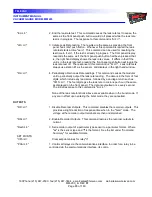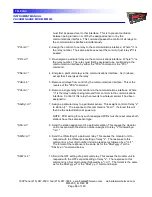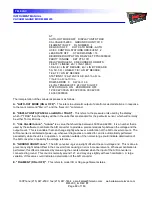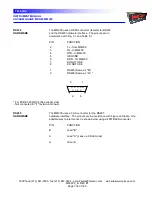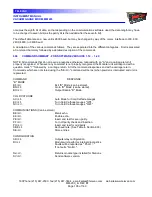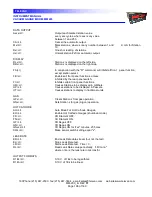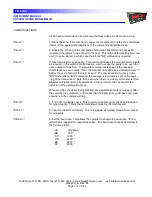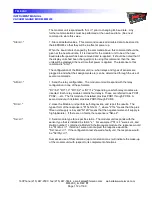
INSTRUMENT MANUAL
VACUUM GAUGE MODEL MM200
160Phone:(215) 947-2500 fax:(215) 947-7464 e-mail:[email protected] web site:www.televac.com
MM-200_im REV M
Page 99 of 160
TELEVAC
STATUS
CF<cr>
Clear operational error bits.
DH<cr>
Perform diagnostics, but hold results.
DI<cr>
Modular unit performs internal diagnostics.
Faults will be reported as " P5LO ..."
If no faults "No Err ". In the burst mode, the
response is in the form of six Hex nibbles.
RY<cr>
Send relay status
DP<cr>
Send previous (accumulated) faults.
ST<cr>
Output status of several variables.
THERMOCOUPLE, CONVECTION AND DIAPHRAGM GAUGES ZEROING
AF<cr>
Turns off adjustment for atmosphere.
AN<cr>
Turns on adjustment for atmosphere.
AP<cr>
Presets the atmosphere values to neutral.
Ayxxx<cr>
Adjusts station "y" to "xxx".
OZ<cr>
Output atmosphere and zero status.
ZA<cr>
Enable automatic zeroing of sensors.
ZC<cr>
Clear stored offsets.
ZF<cr>
Disable zeroing & auto zeroing of sensors.
ZN<cr>
Enable zeroing of sensors.
ZO<cr>
Disable automatic zeroing of sensors.
Zn<cr>
Zero station "n" reading.
RS485 HOST COMMAND SET
Special commands are used for addressing individual units on the RS485 bus, and for sending "broadcast"
commands.
RS485 is always used with echoes blanked, and is usually in the burst mode. The front
panel is also disabled, except that a local operator may be allowed to change the
stations that are shown in the two displays.
Addressing a unit enables the unit to respond to the command that immediately follows
the address, if the address corresponds to the unit's preset address. When a unit has
been addressed, the command that immediately follows is exactly the same as used for
RS232. The unit that receives a command after receiving it's address shall comply with
the command, and respond the same as when RS232 is being used. Up to thirty-one
units may be addressed by a host. (Together with the host, this makes the maximum of
32 nodes on the RS485 network).
Broadcast commands are those commands that all units receive and process. Units do
not respond with an answer after receiving a broadcast command. To do so would
cause contention on the bus, and would be unintelligible to the host.
All other transmissions on the RS485 bus are ignored by units, such as commands to
other units, and responses from other units.

